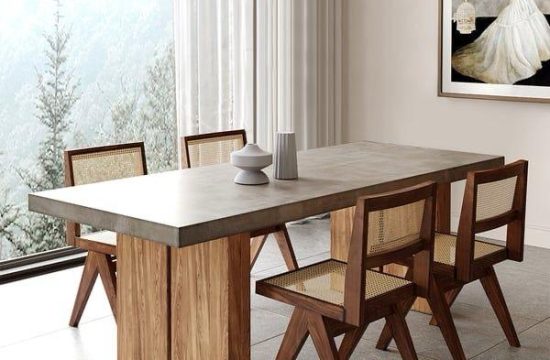BY SUSAN LaHOUD / SUN CHRONICLE STAFF
NORTH ATTLEBORO — Not much is known about furniture crafted in Southeastern Massachusetts immediately following the Colonial era.
But a project currently underway through the Winterthur Museum is attempting to change that.
Brock Jobe, who teaches graduate courses in historic interiors and American decorative arts at the Winterthur Museum & Country Estate in Delaware, has launched the Southeastern Massachusetts Furniture Project. Dubbed “Home and Harbor,” it’s aimed at identifying and cataloguing furniture made in the area from 1710 through 1850, before mass production brought an end to most of the region’s small furniture-making shops.
The project has included stops at many, if not all, of the historical societies in the Attleboro area, said Jack O’Brien of Reading, one of the project’s researchers.
“It was only at the turn-of-the-century that you even had the idea of American furniture,” he said during a recent presentation before the North Attleboro Historical Society.
It was at that time, O’Brien said, that people started to notice, for example, Boston- and Newport-influenced furniture on the North Shore and in Connecticut. “What was missing, with the exception of the Pilgrim century, was Southeastern Massachusetts,” he said.
The 150 years that followed the Colonial era are considered critical because they lead up to the Industrial Revolution, when mass-production essentially wiped out small furniture makers.
The most likely reason that the contributions of Southeastern Massachusetts furniture makers, including those on the Cape and Islands, have largely been overlooked until now “was because Boston and Newport dominated in the 18th and 19th century – there was not a geographic or urban center” associated with this region, he said.
“Up until New Bedford in the 1840s-’50s, there was no urban center to make the furniture,” O’Brien said.
Of the many influences in furniture crafted in the region is the sea, even in Bristol County, he said.
Sea chests, scrimshaw and marine art work made their marks. Ship building went hand in hand with furniture making and allowed use of wood from outside of the region.
The quest has brought O’Brien to local items like a Chippendale-fashioned chair at the Carpenter Museum in Rehoboth. It has fluting or reeding on the front and is beautifully made, he said. “It copies a Newport model, but it is distinctly Southeastern Massachusetts.”
He said sleuthing is required in tracking down pieces, especially since many smaller crafters of one-time pieces may not have signed their names to the work. In the case of the Carpenter Museum, records indicate the chair was given in 1870 and has since sat in the historical society’s care, O’Brien said.
While some pieces may not be pretty because they were not donated or maintained in their original condition, “it’s their provenance that makes them so valuable,” he said. “Provenance is the mother’s milk of this.”
In Mansfield, a desk from the period was identified. In Norton, there was a table.
“It’s not too sexy,” but the value is that it was likely made in the region, perhaps Dartmouth or New Bedford, he said. A more high profile piece is a New Bedford high chest by Cornelius Allen, possibly of Barnstable.
Along with historical societies, probate records, family collections and furniture collectors are among the resources tapped to pin down dates, trace local furniture crafters and identify pieces of the period, O’Brien said. Only about 1 percent of the furniture from the era was signed, making identification more of a challenge.
The Home and Harbor project covers not only pieces made in the region, but influences and items brought into the region from elsewhere during that time.
One of the more famous furniture makers in Southeastern Massachusetts, Robert Crosman (1710-1799), was a joiner from Taunton. Two chests of his creation are at the Old Colony Historical Society in Taunton, with one dated to 1729 and another 1742. They are known as “Taunton chests.”
It was likely he had another job on the side, but as a furniture maker “he is remarkable because of his fanciful design,” O’Brien said. Crosman made an estimated 20 or 30 of the chests; one of only a handful of Crosman originals that remain intact today recently sold through Christie’s Auction House for nearly $3 million.
Some clues O’Brien employs in his detective work is the wood used to craft a piece. A cabinet made of birch with sycamore legs “is definitely not wood used in high-style Boston furniture. It was likely a local piece,” he said.
“It’s been an amazing experience,” O’Brien said of his work to date. “If nothing else, the job is interesting because of the stories behind the pieces or how they were discovered. There’s one, he said, where the owner of a circa 1750 home opened a wall and found a “dump” next to the fireplace where there were slat-backed or ladder-backed chairs.
“They had their original surfaces, something that’s very valuable in the antique world today,” he said.












